
December 21, 2017
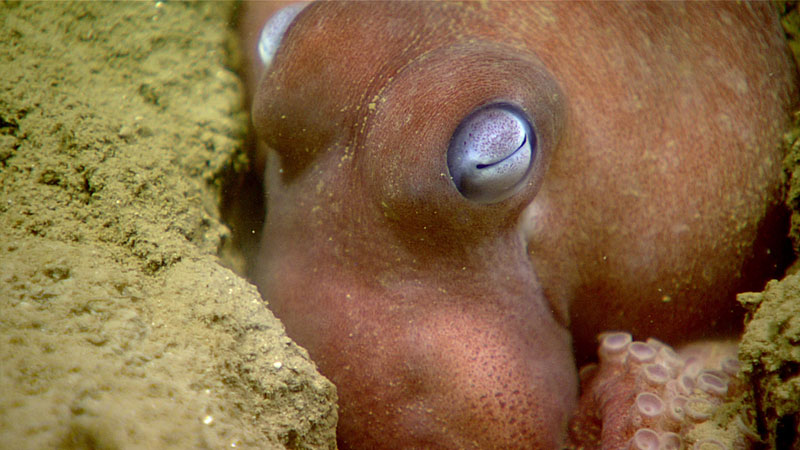
We didn’t encounter many octopods during this expedition, but on the December 18 dive at Gulfoil/MC796, we saw two, likely Muusoctopus januarii. Image courtesy of the NOAA Office of Ocean Exploration and Research, Gulf of Mexico 2017. Download larger version (jpg, 1.0 MB).
While rough weather forced us to cancel several dives, we were able to conduct 17 total dives using Deep Discoverer and Seirios to explore sedimented seafloor, deep coral and sponge gardens, carbonate walls covered in life, an 18th- or 19th-century shipwreck, cold seeps with chemosynthetic communities, a shipping container and its debris, the vast and unexplored water column, and more. Below are just a few of the highlights from NOAA Ship Okeanos Explorer’s 2017 return to the Gulf of Mexico.
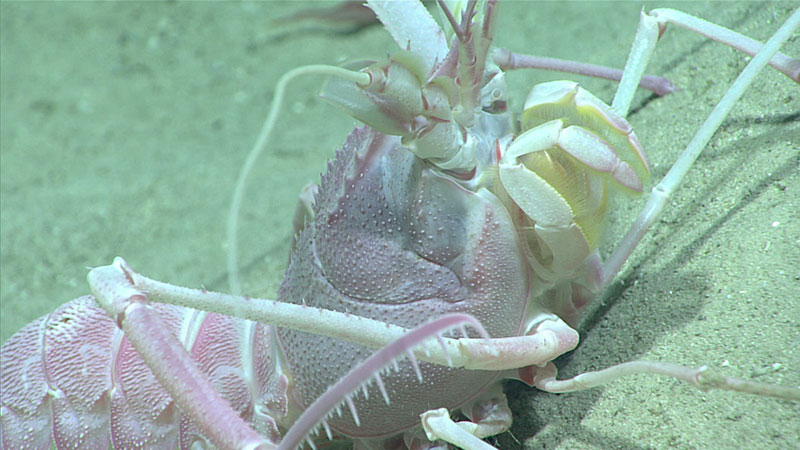
Close up of a blind white lobster (Acanthacaris caeca), seen during the third dive of the expedition, in an area dubbed “Okeanos Ridge”, as it was first mapped by NOAA Ship Okeanos Explorer in 2012. Image courtesy of the NOAA Office of Ocean Exploration and Research, Gulf of Mexico 2017. Download larger version (jpg, 909 KB).
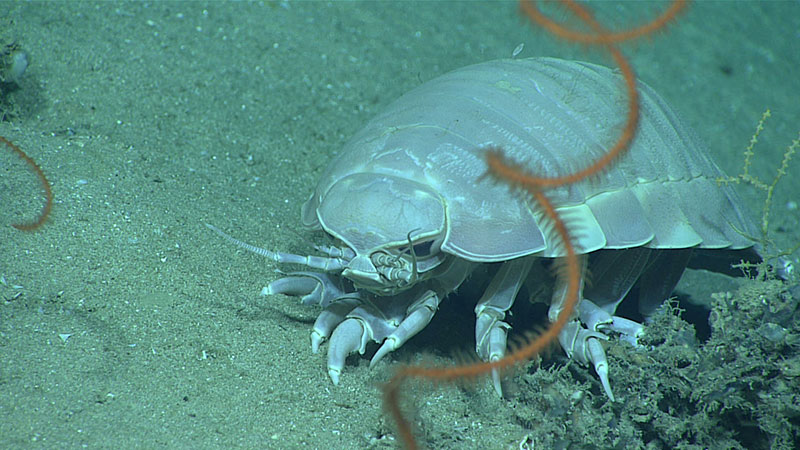
A giant deep-sea isopod, Bathynomus giganteus, with an antipatharian whip coral, Stichopathes sp., in the foreground. While this isopod was spotted during exploration of “Okeanos Ridge,” we saw several of these throughout the expedition, and even managed to catch footage of one swimming. Image courtesy of the NOAA Office of Ocean Exploration and Research, Gulf of Mexico 2017. Download map (jpg, 1.1 MB).
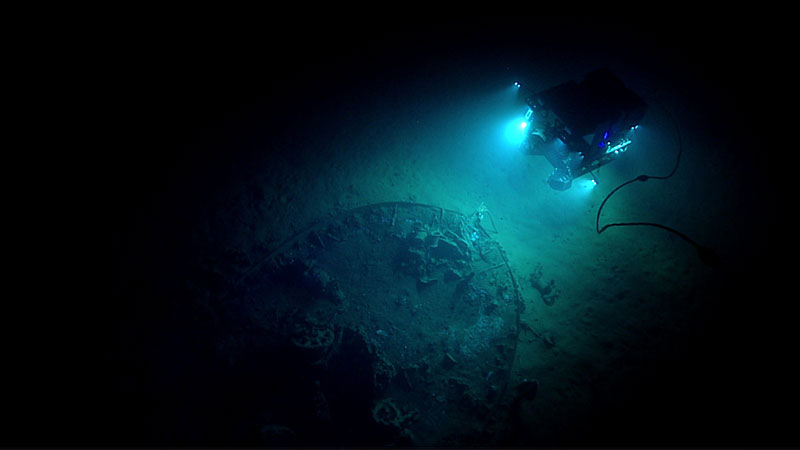
During Dive 07, Deep Discoverer explored an unknown shipwreck identified by the Bureau of Ocean Energy Management simply as “ID Number 15377.” The ROV conducted a full survey of the wreck, collected imagery to generate a 3D mosaic survey, and documented biology living on the wreck. Based on initial observations, archaeologists believe the shipwreck likely post-dates 1830 and may have been a merchant ship built for distance over speed. Image courtesy of the NOAA Office of Ocean Exploration and Research, Gulf of Mexico 2017. Download larger version (jpg, 311 KB).
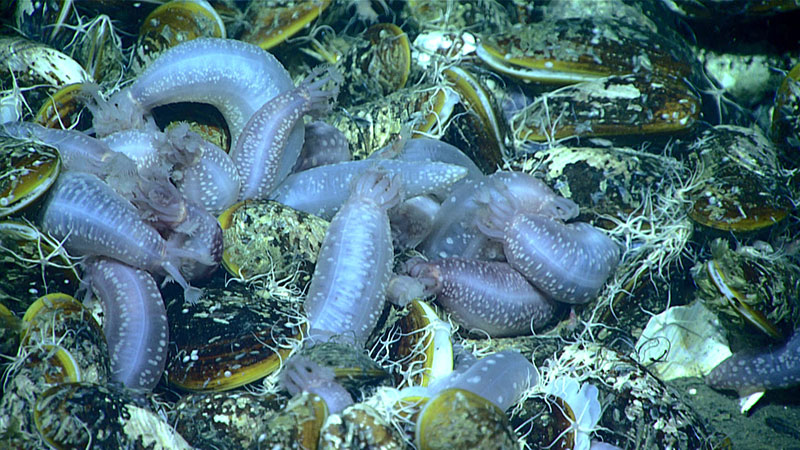
Sea cucumbers, Chiridota heheva, with chemosynthetic Bathymodiolus mussels, seen during Dive 08 of the expedition at a seep site identified via multibeam surveys conducted by NOAA Ship Okeanos Explorer the night before the dive. Image courtesy of the NOAA Office of Ocean Exploration and Research, Gulf of Mexico 2017. Download map (jpg, 1.2 MB).
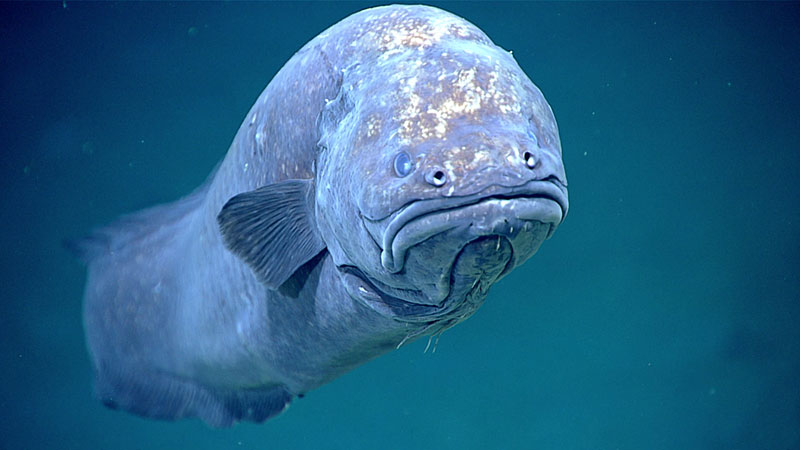
A particularly grumpy-looking ophidiiform cusk eel encountered at a depth of 1,585 meters (5,200 feet) during Dive 12. Image courtesy of the NOAA Office of Ocean Exploration and Research, Gulf of Mexico 2017. Download larger version (jpg, 736 KB).
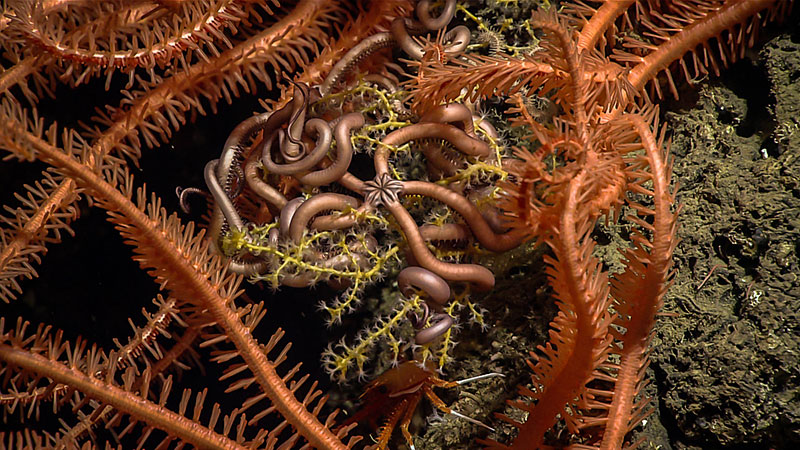
An asteroschematid snake star coiled among the branches of a small plexaurid octocoral, and surrounded by the spiny arms of large Novodinia brisingid sea stars on a craggy carbonate pinnacle discovered during Dive 13 at Tunica Mound at a depth of 401 meters (1,315 feet). Image courtesy of the NOAA Office of Ocean Exploration and Research, Gulf of Mexico 2017. Download map (jpg, 1.9 MB).
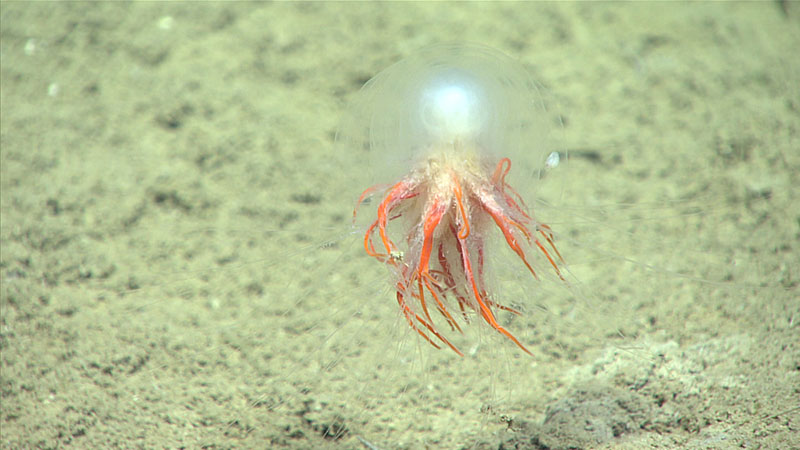
This dandelion siphonophore was seen while exploring “Penchant Basin” at a depth of ~800 meters (2,625 feet). Image courtesy of the NOAA Office of Ocean Exploration and Research, Gulf of Mexico 2017. Download larger version (jpg, 780 KB).
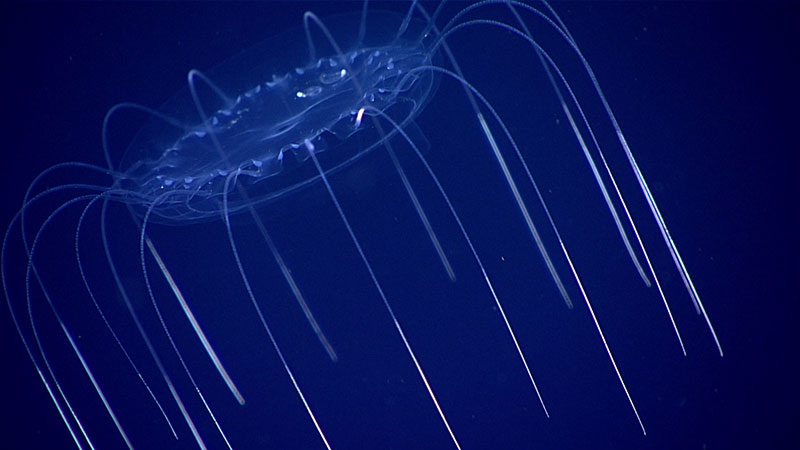
During this expedition, we had the opportunity to explore the water column following the seafloor portion of several dives. By conducting a series of transects at intervals between 900 and 300 meters depth, we caught glimpses of the life that inhabits this largest and least explored environment on Earth. Image courtesy of the NOAA Office of Ocean Exploration and Research, Gulf of Mexico 2017. Download map (jpg, 761 KB).